Every time one group or another posts a list of tricky words, my interest is piqued. What’s tricky about these words, I wonder? But really? I needn’t wonder. Here’s a list of 21 (Tricky Words ) that I came across just the other day. If you look at the words on this list, you’ll notice what I’ve noticed – these words are often misspelled because their spelling doesn’t match their pronunciation. And as usual, the word is getting the blame for that. How many thousands of words have to end up on the ‘Tricky Words’ list before we start considering that there is more to why a word has a certain spelling than merely its pronunciation? Let’s take a closer look at four of the twenty one words on this list.

When I looked at the specific words on this list, I wasn’t surprised to see ‘accommodate’ as the very first one. I was surprised, however, to see what the author considered helpful information so we could better understand the spelling of this word.
This reminds me of the way vocabulary was introduced to me back in my school years. I was given the accurate spelling of the word followed by the word represented in phonetically spelled syllables. And even though the phonetically spelled syllables helped with pronunciation, in order to pass my vocabulary test I had to remember that the pronunciation spelling and the actual spelling of the word were not the same. Lastly, there was a definition of the word. The clear message here is that first we pronounce the word and then we learn its meaning. When given a list of vocabulary words to know, matching the right word to the right definition was what was really tricky! Ultimately, the task was to memorize the spelling of the word and which definition that went with it. A totally rote memorization activity. When I could, I made up silly rhymes or rhythms to help me remember those pairings. Sometimes it worked and sometimes it didn’t.
Yesterday I spent some time in a 5th grade classroom. I told them about finding ‘accommodate’ on a list of tricky words. I began by discussing the meaning of accommodate. If I was going to offer someone accommodations, I would first see what they needed and then try to fit those needs. I used the example of a motel offering a family of eight a room with a single twin sized bed. Would those accommodations be appropriate? Would they fit the family’s needs? No. They would not be a good fit. The family would need different accommodations.
I then asked a student to write their hypothesis for the spelling of ‘accommodate’ on the board. I asked if anyone had a different spelling hypothesis and invited that person to add theirs to the list. When I had several different spellings, we stopped to consider them.
All of the students said that they base the spelling on how the word is pronounced. It is obvious that these students know several ways to spell /eɪ/. Within the last week I had them look closer at the <igh> trigraph and its pronunciation when preceded by a vowel (as in eight and straight). They must’ve thought accommodate was another word with that pattern.
I said, “If it is true that a word’s spelling is based on its pronunciation, can you hear whether there should be one <c> or two?” Someone replied that they couldn’t ‘hear’ how many <c>’s were in the spelling, but that two <c>’s looked right and one <c> didn’t. Hmmm. So they were basing the spelling on sound and looks. What a brilliant illustration of why this word is considered tricky. It can’t reliably be sounded out and judging its spelling by looks only works if you’ve seen the word in print a number of times and remember something about its spelling.
Now that we established why this word is said to be tricky I asked, “What if there is more to notice? What if there is a more reliable way to understand this spelling – and not only understand it, but remember it? What do you say we look at this word’s structure. Let’s look at the morphemes. Does anyone recognize a suffix on this word?”
I started with asking the students to notice a suffix because so many of the student hypotheses had a final <ate>. When someone suggested <ate>, I asked for some other words with a final <ate> suffix. Suggestions were ‘migrate’ and illustrate.’ So I began a blank word sum with a final <ate>. Next I directed their attention to the beginning of the word. “Does anyone recognize a prefix on this word? Even if it’s not the first thing in the word.” With that caveat, one student raised their hand and said, “<com>”. I added that it usually brings a sense of “with” to a base, although it can also be there to intensify the action of the base. I asked for some words with a <com> prefix. The students thought of ‘complete’ and ‘complex.”
They were very unsure of the <ac> in front of the <com>, and I knew they hadn’t yet learned about assimilated prefixes, so I told them that it is a prefix with a sense of “to”. We often see this prefix spelled as <ad>, but in this word, it is spelled <ac> to better match the articulation of the next element, <com>. It would feel awkward to say *adcommodate. In fact, if you say *adcommodate several times quickly, you will notice that your mouth smooths that pronunciation out to become ‘accommodate.’
Since we were only missing one more morpheme in this word (the base), I filled it in as <mode>. I told the students it had a sense and meaning of “measure, manner”. Now we could look at the word sum as <ac + com + mode + ate>. Looking at each morpheme, I reviewed the sense or function of each morpheme in this word. If we think about what each morpheme contributes to the meaning of this word, we have a verb that means “to measure with emphasis”. If we connect that to our previous discussion of how we use this word , we could think of measuring something in order to make it best fit a situation. The example I had used earlier was to make some overnight accommodations fit the needs of a family. First we measure what those needs are and then we see how we can best fit them.
Looking back at the word sum, we talked about replacing the final <e> on the base with the vowel suffix <ate>. We announced the word sum a few times as a group before I asked them to announce it as they wrote it down. I wanted to point out that understanding the structure and then spelling the word by announcing its morphemes will be a more reliable strategy for spelling than sounding it out or judging the word on its looks. We announced the fully spelled word as “ac .. com .. mod replace the e .. ate”.
If I had more time, I would have asked the students to look at this word at Etymonline. They would have found it was first attested in 1530’s. It derives from Latin accomodatus “suitable, fit one thing to another.” By the late 16c it was used to mean “furnish with suitable room and comfort.” That jives with what we discussed. Then I would have them put modus in the search bar to find other words that share this base. Had they done that, they would have found modest, moderate, modern, modify, commodity, and even commode. As I have done in the past with these students, we would have read each word’s entry at Etymonline, specifically looking for a connection to “measure, manner.” This is how to broaden their vocabulary!
Accommodate: /əˈkɑməˌdeɪt/ (verb)
Notice that I’m using IPA. It is a way to represent pronunciation separate from spelling. It also signals primary and secondary stress in the word. If the student sees where the stress is, it is easier to understand the vowel being a schwa in the unstressed syllable. If you look back at the student hypotheses for the spelling of this word, you will see that three students thought there would be an <i> before the <d> and only one student thought there might be an <o> there. If the student relies solely on pronunciation to make spelling choices, they are apt to make errors. Again, learning the morphemes and spelling words by announcing those morphemes will likely eliminate that error.
<ac + com + mode + ate>
<ac> assimilated prefix from <ad> “to”
<com> intensifying prefix (intensifies or brings emphasis to the action of the base)
<mode> from Latin modus “measure, manner”
<ate> verbal suffix
Another word on this particular list of tricky words was kaleidoscope. Here is how the “tricky list” explained it.
Again, we are given a pronunciation and a definition with little connection between the two.
With another group of students I asked for hypotheses about the spelling of the word. Here are three.
collidiscope
colidescope
collidascop
I didn’t ask for any more hypotheses at this point because I could see the misunderstanding here — and I found it fascinating. The students thought they were hearing the familiar word ‘collide’ as part of this word. I asked them about it. One student explained how the bits in a kaleidoscope collide with each other as you turn the tube. While that is a logical idea, I told them that the beginning /k/ in this word is spelled with a <k>. They were so surprised. The first morpheme in this word is <kal>. A look at Etymonline tells us it derives from Greek kalos meaning “beautiful, beautious.” I have looked in the OED to find other words with this same base, but the words I found were not familiar. I think it’s interesting that the words kaleidophone and kaleidograph came into use after kaleidoscope, but obviously didn’t stay in use.
The next morpheme in this word is <eid> and derives from Greek eidos “shape, appearance.” So far the two morphemes we have examined give us the sense of “beautiful shapes.” I love that. Every time I turn the tube of a kaleidoscope, I see another beautiful shape! This base <eid> “shape, appearance” is an etymological relative to words with <-oid> such as asteroid “shape of a star” and adenoid “shape or form of a gland”, and also to words like idol “a form or likeness that is worshipped” and iodine “violet colored in appearance”.
Now what about the final morpheme? The free base <scope> is one that you no doubt recognize from words like telescope and microscope. It derives from Greek skopein (σκοπός) “watcher, observer.” When this word was coined by the inventor of the kaleidoscope, David Brewster, he drew upon his familiarity of the word microscope and incorporated <scope>. Now when we put all of the pieces (morphemes) of this word together, we get the word sum <kal + eid + o + scope>. The literal meaning of this word is “watching beautiful shapes.” Isn’t that something?
We read the word sum aloud, noting the <o> connecting vowel that is sometimes found in words that have one or more bases from Greek. In this word, we did not find evidence that the <o> was part of either <eid> or <scope>. In this case, it is a connecting vowel. After we read aloud the word sum a few times, I had them recite the word sum as they wrote it down. In this way, they are spelling a word by morphemes rather than by letter, letter, letter, etc. We announced it as “kal .. eid .. o .. scope”.
Here’s a short video that explains how kaleidoscopes work.
Here’s another word that would be easier to remember if only we looked beyond pronunciation and definition.
I did not have the opportunity to ask a group of students about this word, but I imagine if I asked for a hypothesis about its spelling, students would suggest either seeling, sieling, ceeling, or something similar. The thing is, they would be right had they lived in a certain area of England sometime between 1500 and 1600. In fact, according to the OED, there were a number of regional spellings prior to the use of the printing press. It was at that point that narrowing it down to one spelling was necessary.
So why is the current spelling the one that made the final cut? If we follow the etymological journey of this word, it will no doubt lead us to information that will help. According to Etymonline it entered English in the mid 14th century. At that time it was spelled celynge and was used to mean “act of paneling a room.” That spelling derived from the Middle English verb ceil “put a cover or ceiling over,” and later “cover walls with paneling or wainscoting.” We can see that the current spelling matches the spelling of the ME verb!
Further back in time, it is thought this word derives from Old French (12c) celer “conceal,” and before that from Latin celare “to hide.” We can get the sense of lining walls or the inside of a roof with boards in order to hide or conceal the rough outer wall. There is also the possibility that the spelling of this word is influenced by Latin caelum “heaven, sky.” Doesn’t that add a lovely idea – that we are hiding the sky when we add a ceiling? For those who like to imagine the sky from inside a room, there are many ceilings that have been painted, permanently marking a clear blue sky. If you prefer to see the actual sky, you could always install skylights.

Art, Web Gallery of. “Palazzo Ducale Oculus by Mantegna.” World History Encyclopedia. World History Encyclopedia, 08 Sep 2020. Web. 20 May 2023.
By 1934, this word had the figurative sense of “upper limit.” Currently in the U.S. there is a lot of discussion regarding our government’s debt ceiling. That use certainly illustrates the meaning of “upper limit.” By 1908, the phrase “hit the ceiling” was being used figuratively to mean “lose one’s temper, can’t take any more.” More recently (1988) the phrase “glass ceiling” came into use to mean an invisible barrier, specifically applied to limiting what a woman can achieve.
This kind of word story (side note: the word ‘story’ derives from Latin historia “history, account, tale, story.”) is what makes a spelling understood. Things that we understand are much more memorable than those we don’t.
Now let’s look at ‘patience’.
I have a couple guesses as to what would make this a “tricky word.” My first guess is that it is a homophone to ‘patients.’ As a reminder, homophones are words that share a pronunciation, but not a spelling (whenever it’s possible). They have different spellings to signal different meanings. In this case, ‘patience’ is an abstract noun meaning “tolerating delays, trouble, or suffering without getting angry or upset.” The homophone ‘patients’ is simply the plural form of ‘patient.’ A doctor may have one patient to see or may have several patients to see.
My second guess would be that many people don’t expect <t> to represent /ʃ/ as it does in ‘action’ and ‘motion.’ If you’ll notice, in each of those words, the <t> is followed by an <i>. When that is the case, the <t> has the potential to be pronounced as /ʃ/. Is it a rule? Will it happen always? No. Think of ‘tin’ and ‘still.’ Even when the <i> following the <t> is part of a suffix, it may not be pronounced as /ʃ/. Think of ‘question’ where the <t> is pronounced as /tʃ/ (as it is in ‘picture’).
So what’s happening in ‘patience.’ Is the <i> part of the suffix? It is not. The <ence> and <ent> in patience and patient are common suffixes. We see them in difference/different, emergence/emergent, residence/resident, and more. Is the <i> a suffix on its own? Is it perhaps a connecting vowel? It might be. This is where we need etymological evidence. Where is this word from? What is its furthest back attested ancestor (prior to Proto Indo European roots)?
At Etymonline we are told that ‘patience’ is first attested c 1200. At that time it was spelled pacience and was used to mean “quality of being willing to bear adversities, calm endurance of misfortune, suffering, etc.” (I would pause here to discuss that definition. Is is similar or different that how we use the word today?) Earlier than that, this word was in Old French and spelled pacience. It meant “patience; sufferance, permission.” Earlier than Old French, it was in Latin as patientia and meant “bearing, supporting; suffering, enduring, permitting; tolerant,” but also “firm, unyielding, hard.” Latin patientia was an abstract noun formed from the adjective patientem. The adjective patientem was derived from the present participle of patī “to endure, undergo, experience.”
When I saw the words “present participle” I thought of a verb and searched for patī at Latdict. Once I found it, I checked to make sure the definitions matched what I was reading at both Etymonline and the OED. The next thing I noticed was the past participle form of this verb – passus. The <us> in passus is the Latin past participle suffix. Once removed, it leaves us with the Latin stem pass which came into English as the base <pass>. Keeping in mind the denotation of this base, you will not be surprised to see it in compassion, passion, and passive. And besides seeing the base <pati> in patience and patient, you will also see it in compatible!
A great site to visit when looking for additional related words is Robertson’s Words for a Modern Age. If you type one of the words you are looking at into the search bar, you can begin your search. After the initial entry for the word I had searched for (patience), I found this.
I clicked on the link for <pass> and <pati> and found the following words.
compassion
compatible
dispassionate
impassioned
patient
impatient
patience
incompatible
passion
passionate
passionless
passive
passively
incompassionate
uncompassionate
The number of prefixes that are used in this word family is surprising! How does each steer the sense and meaning of the base? That would be a great inquiry to do with students. There are also a number of suffixes used in this family. One possible activity would be to use the words in sentences and then to discuss how the suffix pointed to the function of that word in the sentence. Here are two matrices that reflect the word family built on each of these two bases.
You may notice that I chose not to include ‘compatible’ on the <pati> matrix. I can explain the structure of that word, but wasn’t sure if that explanation clear once it was in a matrix. Here’s what I mean by that.
Using Etymonline, I see that ‘compatible’ is an adjective. When it first entered English it meant “capable of coexisting in harmony.” Prior to that it was in Medieval Latin as compatibilis. Further back it was in Late Latin as compati. The next thing we see in that entry is the bolded word ‘compassion.’ Seeing that link, I know I need to follow it to get more information about where ‘compatible’ derives from.
Towards the end of this entry, you’ll see Late Latin ‘compati’ which is where we left off in the previous entry. It was a word built from <com> “with, together” and <pati> “to suffer.” The word sum for ‘compatible’ would be <com + pati + ible>. That obviously won’t work because there are not two <i>’s in the word ‘compatible.’ One of the <i>’s elided. I can definitely understand the structure of this word, but that story can’t be told well on a matrix. I wouldn’t list the suffix as *<ble> or the base as <*pat>. In this situation, I would discuss this word and its structure with students, focusing on its meaning relationship to this word family. And instead of including it on the matrix, I would list it either to the side of the matrix or just below it.
Next time you see a list of “Tricky Words,” ask your students to choose one and take a closer look. What more can we learn when we look at the morphology and etymology? How will that information make the word more meaningful and make its spelling more memorable? What related words can be found during the research?
Even if your student CAN remember the spelling of a word along with a quick definition, think of what they are missing when they are aren’t taught to use the etymological resources. Learning doesn’t have to feel like a race. We don’t have to skip important steps in order to get to the finish line on time. Learning takes the time it takes. Your students deserve to enjoy the journey and to be delighted in the discoveries and connections they make along the way. Discovering connections between words and the fascinating facts of a word’s etymological journey into Modern English are the pieces students enjoy. They aren’t fluff.
Here’s a great quote by Marilyn Ferguson. “Making mental connections is our most crucial learning tool, the essence of human intelligence; to forge links; to go beyond the given; to see patters, relationships, context.”


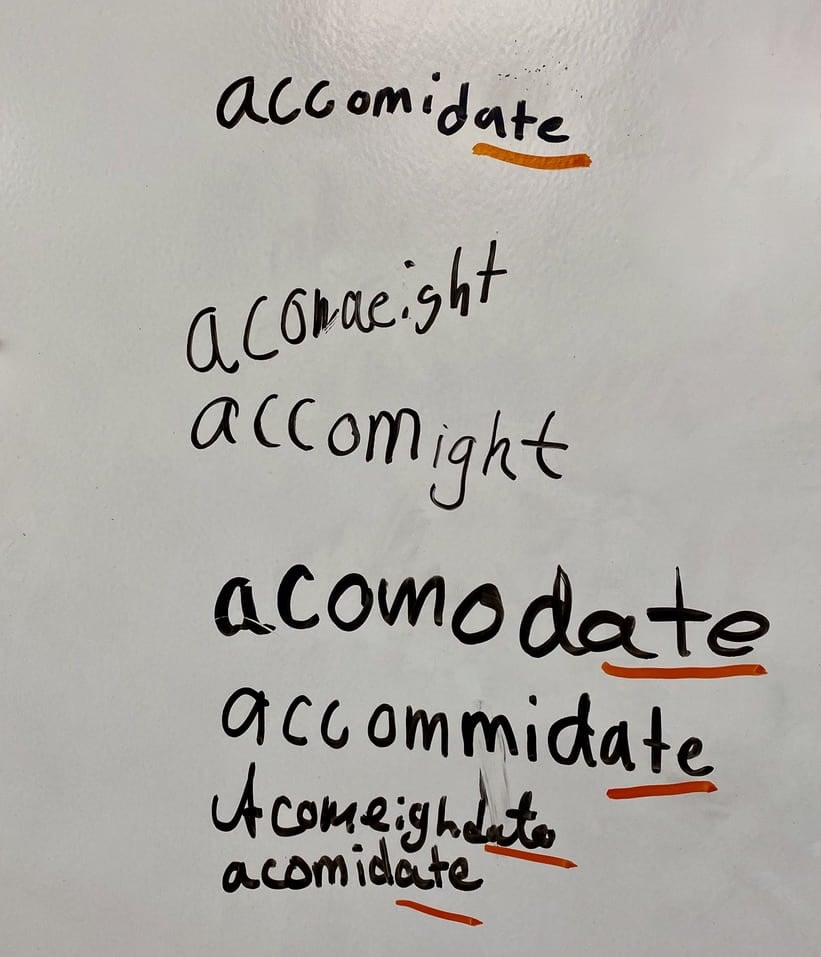
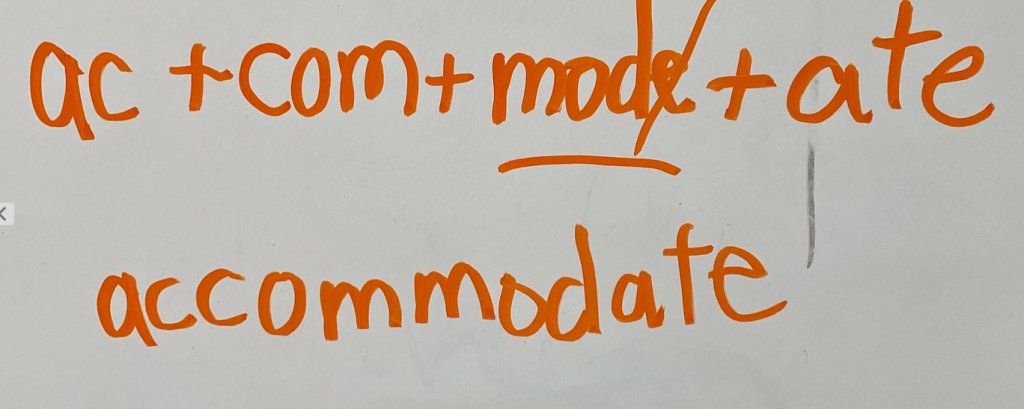





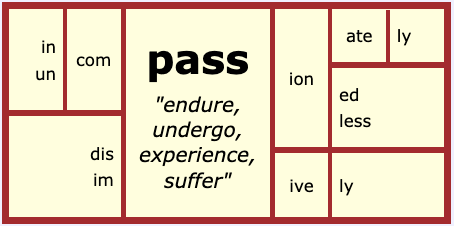
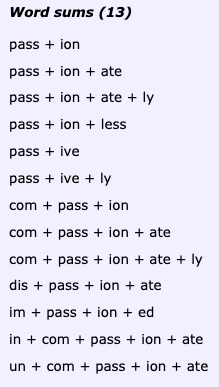
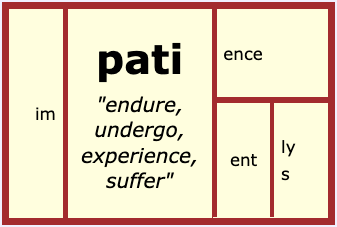


I loved every part of this, Mary Beth! Including the explanation of a kaleidoscope and the video on how one is made that followed it. A beautiful explanation of those ubiquitous “tricky words” that really aren’t tricky at all.